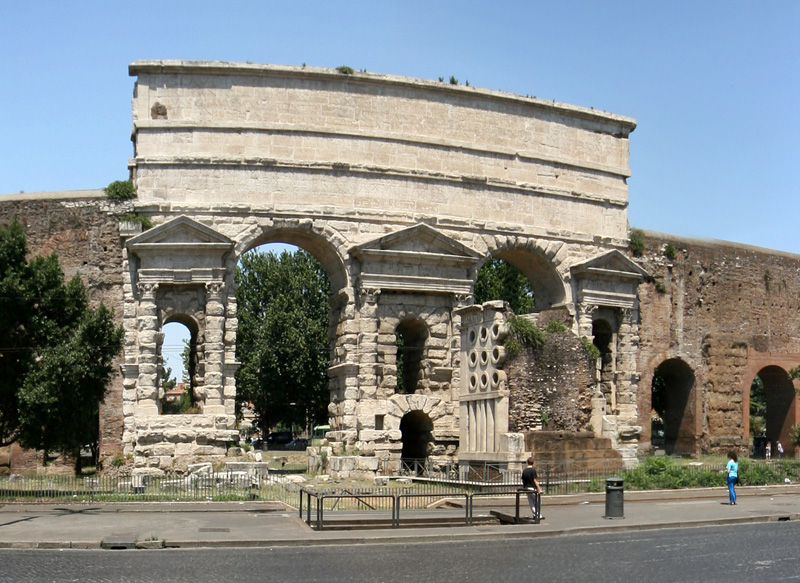
This image from Porta Maggiore is part of one of the panoramic images found on the PanoramicEarth.com Tour of Rome. There are over 100 images taken from around Rome linked to an interactive map.
This gate is a short distance away from S Giovanni in Laterano. The metro station of Porta Maggiore is right in front of it, as is a main road. So getting photos of it without a tram or bus in the way can require some patience.
Porta Maggiore was not originally part of the city walls, and was not built to function as a gate, but as an aqueduct. Aqueducts are one of the things the Romans were famous for, then, as now the ever expanding city required more and more water than the local river Tiber could supply. The engineering feats of the aqueducts are now world famous.
Porta Maggiore contains 2 aqueducts, one on top of the other. The earliest one was started in the time of Caligula, and completed under Claudius in 52 AD. Aqua Claudia transported water from Subiaco about 70 km away while the Anio Novus aqueduct was even longer. The aquaduct was built in white travertine and contains inscriptions to Caludius, Vespasian and Titus.
Two important Roman Roads, the Via Prenestina and the Via Labicana, passed through the arches, and when the aqueduct was incorporated into the Aurelian walls in 271, this gate to Rome was known as the Porta Prenestina.
This image is taken from outside the walls. In front of the Porta Maggiore you can see a large travertine block carved with circles to represent bread pans. This is the Baker’s Tomb, built in 30 BC for Marcus Virgilius who baked bread for the state and may have invented the first mechanized dough mixer. He is depicted in a frieze on the tomb.
The full panoramic image showing more of the Aurelian Wall is found on the Rome tour by PanoramicEarth.com.. For better appreciation of this image go to the collection on Flickr.
For more articles on Rome see the Rome Index or select one of the labels at the bottom.


No comments:
Post a Comment